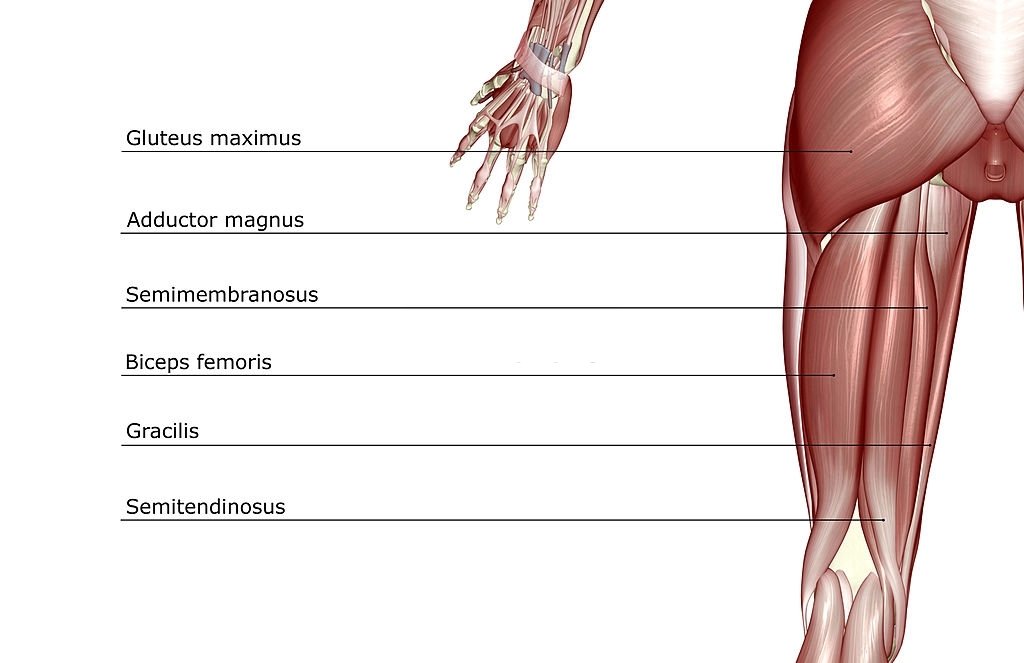The thin adductor muscle called the gracilis has a vital role in your leg movement. This slender muscle is one among a set of five hip adductors, and it helps you a lot in the smooth functioning of the body. It is the most superficial and medial of the adductor muscle group. Even though it is the weakest member of this union, it is the only one that crosses at both the hip and knee joints.
Anatomy Of The Gracilis
The gracilis is one of the obligatory muscles for the movement of your thighs. The process of adduction implies the movement of the body part from the outside towards the body’s midline, and the part of this superficial muscle in it is inevitable. This muscle is stretched from the external ischiopubic ramus point on the pubic bone, and towards down to the upper medial shaft of the tibia. It also descends almost vertically down the leg.

Functions
The gracilis is connected with the coxal bone to the tibia, and because of this, you are free to move your body without any hassle. And this connection of both the hip and knee joints keeps you balanced while you walk and run.
The gracilis muscle assists in:
- flexion of the knees by the hamstring muscle, as during the initial swing phase in walking or boat rowing.
- leg flexion and medial rotation around the knee joint when the knee is in a semi-flexed position.
- thigh adduction and flexion around the hip joint.
While you walk, the medial rotation of the leg occurs as the foot is firmly placed on the ground. While you fix the lower leg, the gracilis muscle laterally rotates the femur and pelvis around your tibia. This becomes the center of the entire process of movement when taken in a nutshell. The balance of your trunk is also determined by this action.
The complete function of the gracilis muscle can be seen while a man rides a horse. The thigh adduction occurs when he grips the horse along with controlling the flexed knee.
As the gracilis has a good blood supply along with its long and flat structure, it is commonly used in reconstructive surgeries on various parts of the human body. This includes facial and breast reconstruction, hand surgeries, and it could be substituted as an external anal sphincter as well.
Possible Complications With The Gracilis Muscle
Since the gracious muscle assists you in various functions of your legs, an injury with it can make all of these actions quite difficult to perform. It will be difficult to walk, run and bend without the help of the gracilis muscle.
Certain conditions that result in gracilis injury could be:
- Groin strain: when your gracilis gets torn by a sudden force or pull, it will bring pain, bruises, and a weak feeling in your inner thighs and groin. A groin strain can be due to a mild or full-thickness tear of the gracilis muscle.
- Muscle spasm: muscle spasticity normally occurs in your gracilis muscle due to neurological conditions like sclerosis. In addition to these causes, gracilis muscle turns tight and its spasm can be triggered by overuse or improper nutrition.
- Weakness due to lumbar pathology: the nerve that supplies information to the gracilis muscle may get irritated after an injury on your lower back. The pain and weakness in the gracilis muscle can be due to herniated discs, disc degeneration, or lumbar facet arthritis.
If the gracilis gets injured, you will experience complications for up to two months depending upon the nature of the injury and how critical it is.
Medicinal Remedies
The pain and inflammation in the gracilis muscle could be soothed with anti-inflammatory medicines. Such medication can help you in reducing swellings too. Whereas, with gracilis muscle spasms, you can find solace with antispasmodic medicines.
Physical Therapies
To give you relief from injuries of the gracious muscle, you can follow various physical therapies. It would improve your strength, functional mobility, and range of motion too.
These physical therapies include:
- Exercises
- Application of heat
- Treating with eyes
- Ultrasound
- Electrical stimulation
- Massage
- Kinesiology taping
If you are undergoing any therapies after a gracilis injury, there is something you need to ensure; that is your active participation in it. Cooperate with your therapist and follow his instructions to do certain activities. It will bring notable changes in your condition and prevent future complications with the gracilis.
As you feel any difficulty while you walk and run, it could be due to injuries in the gracilis muscle. Once you experience pain, inflammation, or any other complications in your leg movement, immediately pay a visit to your physician. Then you will get a better evaluation, proper diagnosis, and remedies of your conditions. You can take some medications to soothe the pain and inflammation. But, be sure to have a clear idea of the benefits, side effects, and risks associated with such medicines. To have a better knowledge of this, your physician will feel happy to assist you.